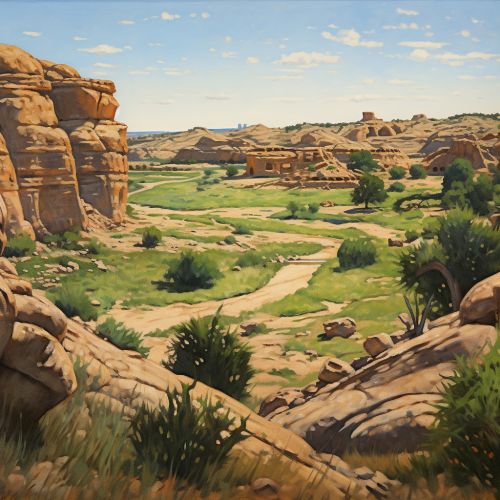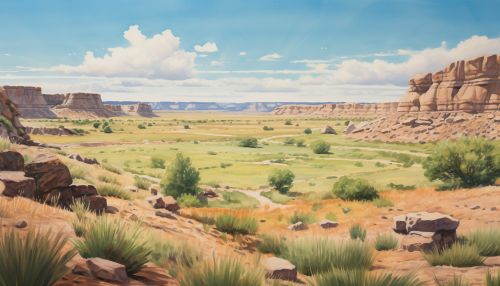Chaco Culture
Introduction
The Chaco Culture represents a significant historical chapter in the evolution of Native American civilizations in the North American Southwest. The culture thrived between 900 and 1150 CE, leaving behind a rich archaeological legacy that includes monumental architecture, roads, and a complex societal structure.
Geography
The Chaco Culture was centered in the San Juan Basin, a high desert region in the Northwestern part of New Mexico. The Chaco Canyon, the heartland of the culture, is characterized by its arid climate, sparse vegetation, and dramatic sandstone cliffs.


Architecture
The Chacoans were renowned for their advanced and intricate architecture. The most notable structures, known as "Great Houses", were massive multi-storied buildings that could contain hundreds of rooms. The largest of these, Pueblo Bonito, had over 600 rooms and was four stories high. These structures were often aligned to astronomical events, suggesting a sophisticated understanding of celestial movements.
Society and Culture
The Chacoan society was highly stratified, with evidence of a complex social hierarchy. The society was likely governed by a priestly class who resided in the Great Houses. The Chacoans were also skilled artisans, producing intricate pottery, textiles, and jewelry.
Economy
The economy of the Chaco Culture was based on agriculture, with maize being the primary crop. The Chacoans developed advanced irrigation techniques to cultivate their crops in the arid environment. They also engaged in long-distance trade, as evidenced by exotic goods found at Chacoan sites, such as macaw feathers from Central America and seashells from the Gulf of California.
Decline and Legacy
The Chaco Culture began to decline around 1140 CE, likely due to a combination of environmental changes and societal upheaval. Despite their decline, the Chacoans left a lasting legacy in the form of their monumental architecture and complex societal structure. Today, the Chaco Culture National Historical Park preserves and interprets these archaeological remains.
